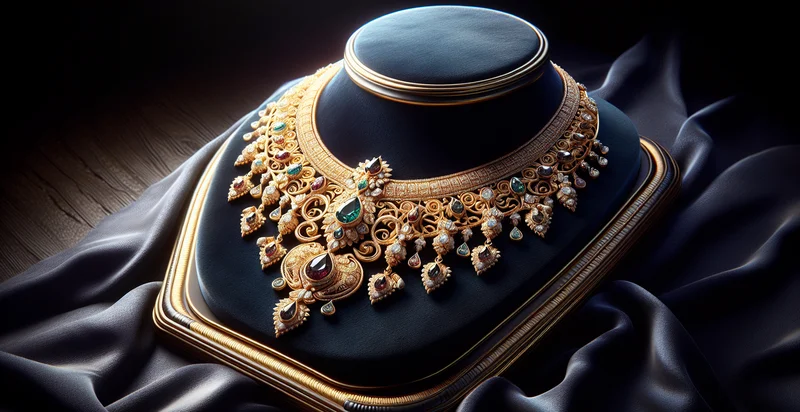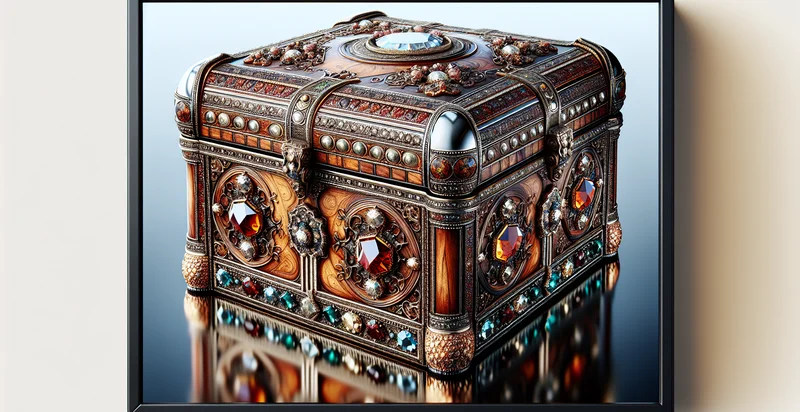Identify what material a necklace is made from
using AI
Below is a free classifier to identify what material a necklace is made from. Just upload your image, and our AI will predict what material a necklace is made from - in just seconds.

Contact us for API access
Or, use Nyckel to build highly-accurate custom classifiers in just minutes. No PhD required.
Get started
import nyckel
credentials = nyckel.Credentials("YOUR_CLIENT_ID", "YOUR_CLIENT_SECRET")
nyckel.invoke("what-material-a-necklace-is-made-from", "your_image_url", credentials)
fetch('https://www.nyckel.com/v1/functions/what-material-a-necklace-is-made-from/invoke', {
method: 'POST',
headers: {
'Authorization': 'Bearer ' + 'YOUR_BEARER_TOKEN',
'Content-Type': 'application/json',
},
body: JSON.stringify(
{"data": "your_image_url"}
)
})
.then(response => response.json())
.then(data => console.log(data));
curl -X POST \
-H "Content-Type: application/json" \
-H "Authorization: Bearer YOUR_BEARER_TOKEN" \
-d '{"data": "your_image_url"}' \
https://www.nyckel.com/v1/functions/what-material-a-necklace-is-made-from/invoke
How this classifier works
To start, upload your image. Our AI tool will then predict what material a necklace is made from.
This pretrained image model uses a Nyckel-created dataset and has 31 labels, including Acrylic, Aluminum, Bamboo, Beads, Brass, Bronze, Canvas, Ceramic, Chain and Copper.
We'll also show a confidence score (the higher the number, the more confident the AI model is around what material a necklace is made from).
Whether you're just curious or building what material a necklace is made from detection into your application, we hope our classifier proves helpful.
Related Classifiers
Need to identify what material a necklace is made from at scale?
Get API or Zapier access to this classifier for free. It's perfect for:
- Quality Control in Manufacturing: The false image classification function can be implemented in jewelry manufacturing to ensure that necklaces are produced from the intended materials. By automating the verification process, manufacturers can reduce the incidence of materials being misidentified, thereby maintaining product quality and brand integrity.
- E-Commerce Product Verification: Online retail platforms can use the classification function to authenticate the materials of necklaces listed for sale. This will help in building consumer trust by ensuring that product descriptions match the actual materials, thus reducing the risk of returns and disputes related to misrepresented items.
- Jewelry Appraisal Services: Appraisers can leverage this technology to more accurately determine the materials used in necklaces presented for valuation. This can expedite the appraisal process, enhance accuracy, and provide customers with confidence that they are receiving a fair evaluation based on reliable data.
- Personalized Marketing: Jewelry brands can use the classification function to analyze customer preferences for specific necklace materials. By understanding customer behavior regarding different materials, brands can tailor their marketing strategies and inventory to better meet consumer demands, enhancing customer satisfaction.
- Fraud Detection in Second-Hand Marketplaces: Online marketplaces dealing in second-hand jewelry can implement the classification function to detect potential fraud. By accurately identifying the materials of necklaces, these platforms can flag items that may be misrepresented as premium materials, protecting buyers from scams.
- Sustainable Sourcing Compliance: Jewelry retailers committed to sustainability can utilize the classification function to ensure that materials used in their necklaces comply with ethical sourcing standards. This verification can enhance their sustainability claims and improve reputation in an increasingly eco-conscious market.
- Integrated Inventory Management: Retailers can incorporate the identification function into their inventory management systems to track necklace materials across their supply chain. This integration enables more efficient stock management and accurate reporting on inventory composition, aiding in supply chain transparency and operational efficiency.


